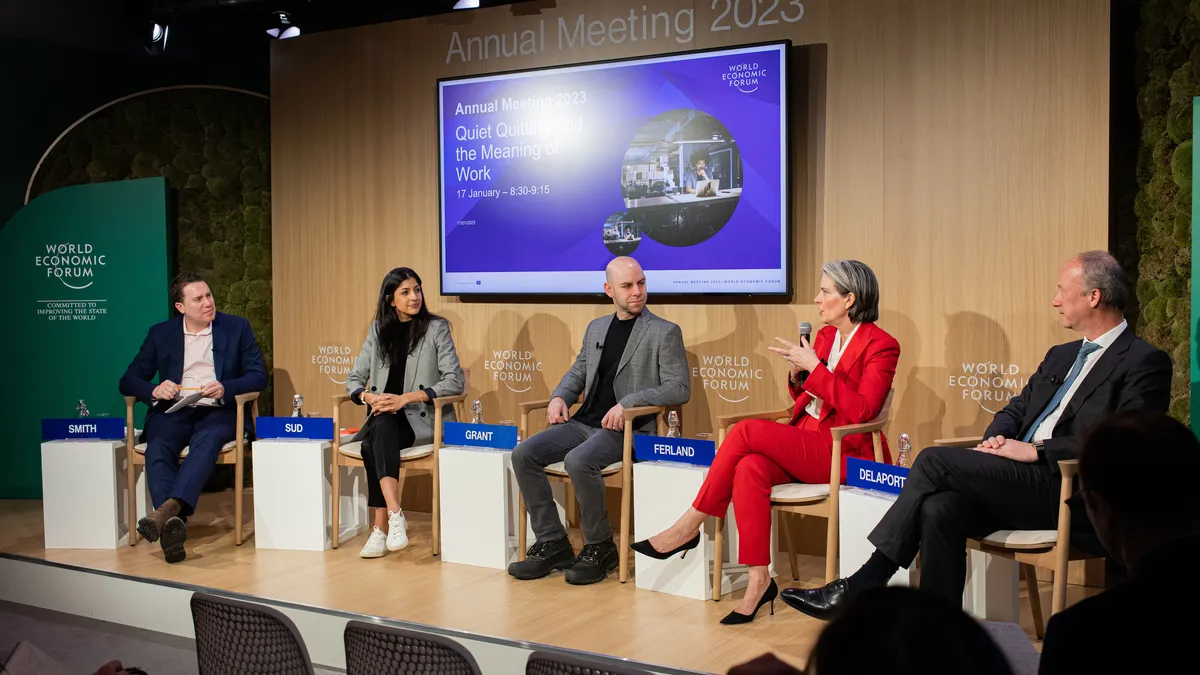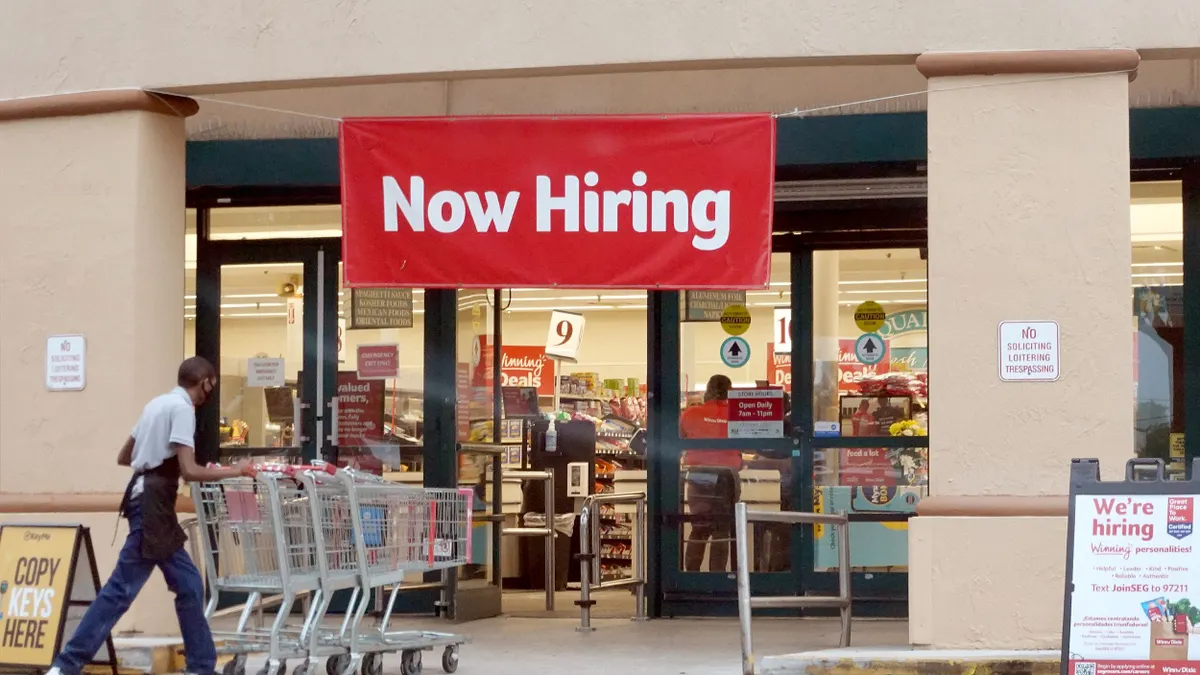Doing the bare minimum and mentally checking out of a job is nothing new, although the latest term for it, “quiet quitting,” is.
“We’ve had terms for this for generations. We used to call it ‘phoning it in.’ Before we had phones, it was called ‘mailing it in.’ This is not a new phenomenon. It's not specific to any generation,” Adam Grant, professor of management and psychology at the Wharton School at the University of Pennsylvania, said Jan. 17 during the Quiet Quitting and the Meaning of Work panel at the World Economic Forum in Davos, Switzerland.
Grant characterized quiet quitting as “the natural sequel of the Great Resignation.” The people who quit during the Great Resignation were mostly those in toxic workplaces or subject to abusive bosses.
“Those people just ran for the hills, empirically. What happened to all of the people who couldn’t? What did they do?” Grant said.
After trying and failing to change their workplaces or improve their situation, those workers decided to recalibrate their contributions to align with what they were getting from their employers. And, for many, after working through the COVID-19 pandemic, dealing with longer hours and more stress without raises, that meant doing the bare minimum, Grant said.
While quiet quitting is nothing new, leaders need to respond in new ways, panelists said.
“How are we going to align people and connect with them in this sort of digital world? I think that actually is a bit of a house on fire because I don’t think most leaders feel equipped to do that,” Anjali Sud, CEO of Vimeo, a video software company, said during the panel. “We talk about reskilling the workforce; I think we need a reskilling of leaders. Period.”
Leaders need to be intentional about how they create culture and communicate with employees, Sud said.
“It takes being self-aware. It takes adopting new mediums and technologies and trying things,” Sud said. “It’s going to take courage and experimentation, but the good news for us is we don’t really have a choice. Employees are going to demand it. Ultimately, for us to deliver on the bottom line, we have to have impact from our teams.”
Vimeo has tried a few approaches to ensure employees are engaged.
The company invites some of its more tenured and engaged workers to participate in panels during its town hall meetings to talk about what they are doing to drive Vimeo’s culture. And, recently, the company said it needed to conduct layoffs and offered employees a voluntary severance package. That way, those who didn’t want to be there could leave instead of quiet quitting, Sud said. Fewer than 2% of workers left.
“We are going to be a bit more proactive in making sure the people at Vimeo have bought into the culture and are actively choosing to be here,” Sud said.
Employers that focus on nurturing and developing workers will prevail, Martine Ferland, president and CEO of Mercer, a consulting firm, said during the panel.
“We need to think differently about work,” Ferland said. “I’m really thinking about new ways of organizing work around skills, around matching.”
She likened the approach to scouting in the U.S. Like scouts earn badges, employees should be able to work to develop different skills of their choice and decide which competencies they want to master, Ferland said.
“We’re really talking about changing from jobs to skills and providing people with self determination like creating their own skill set,” Ferland said.
And giving employees opportunities to move from one role to another and have mobility in their careers is important in fostering engagement and retaining and attracting workers, Thierry Delaporte, CEO and managing director of Wipro, a technology services company, said during the panel.
“We are learning by experience or experimenting. I think at the end of the day, it’s a life lesson as well. We need to realize that companies can no longer be as vertical as they were, that people want to be empowered,” Delaporte said.























